


‘Eric the Unready’ is my first Legend Entertainment interactive novel/adventure game. It’s a game I was aware of as an early teen, but I was so into my Sierra and LucasArts adventure games that I let it slipped by. Now I finally got the chance to play it. ‘Eric’ is a funny game, with humour filled with pop culture references from the 1960s to 1990s. In that way, it doesn’t hold up well, and it’s hard for younger audience to get into. Yet, if you were born at the right time, you will likely find ‘Eric’ amusing. Unlike the ‘Spellcasting’ trilogy, which I have reviewed, ‘Eric’ is more lenient and forgiving when it comes those time-consuming turns. In-game time still plays a role in some quests, but you’re given more freedom to explore and try different solutions to puzzles. This alone makes ‘Eric’ a much more enjoyable game compared to its predecessors. As a long-time Sierra and LucasArts gamer, I found the spreadsheet-like parser interface needing some getting used to. This was particularly so since I could also use a mouse on the static picture in the upper right hand corner to look at items. It’s a shame that the pictures only take up about 25% of the screen, especially with the SVGA graphics. It’s a sign that Legend was already falling behind the times while sticking its traditions. If I need to nitpick about this otherwise entertaining game, it would be the art. It’s very inconsistent with the animated cutscenes having one style, the character close-ups having another, the attractive females looking the best, and most other characters having a grotesque grown-up Cabbage Patch Kids look. It would have been nice to have one art style throughout the game. It was also disappointing to only see recycled art assets for the ending. Overall, I was really pleased by ‘Eric’. It’s fun and can be challenging in a few instances. It’s a nice game that will appeal to gamers born in the 1960s to 1980s, who are also well informed on the popular culture of those times.
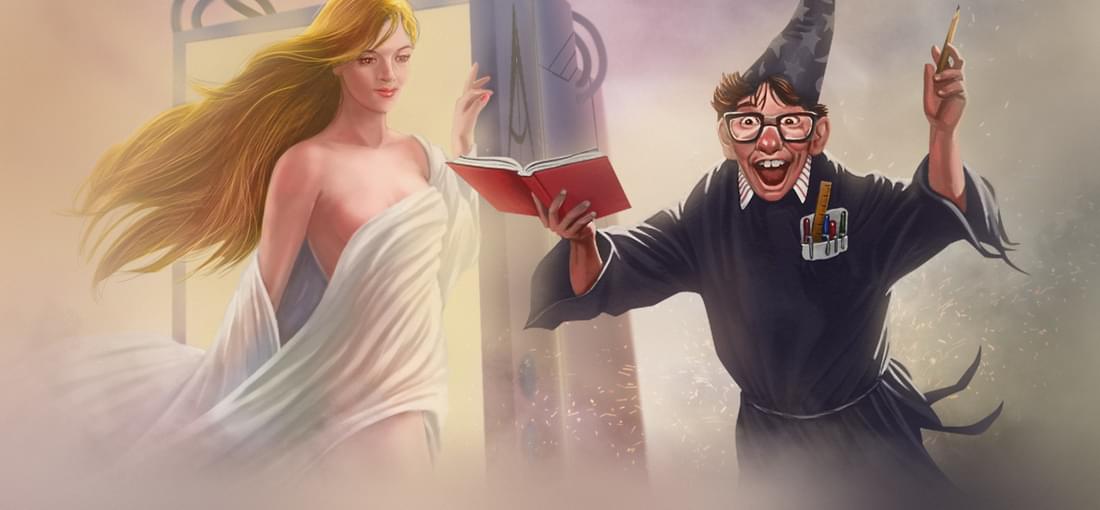
In my early teens, I was curious about the ‘Spellcasting’ games. The problem was that my parents would definitely not buy them for me, and none of my friends had them. With all three games on GOG, I finally got the chance to play these coveted games -- in naughty mode naturally. But even then, I found the ‘Spellcasting’ games to be disappointing. The biggest problem with ‘Spellcasting’ is the time constraint it puts on the players. Part of the fun of adventure games is exploring, and trying different things to solve puzzles. In ‘Spellcasting’, each turn you take -- whether it’s walking, talking, sitting, looking, etc. -- takes up 5 in-game minutes. It’s frustrating that reading a sign, playing a music note, and engaging in dalliance with a woman all take the same amount of time. This critical design flaw sucks the fun out of adventuring. Some would argue that ‘Spellcasting’ are interactive novels. Even then, the time-consuming turns and time constraints only interrupt your enjoyment of the witty writing and humour. Instead of checking out what designer Steve Meretzky has to say about a person, object or location, you’d feel compelled to rush to get things done. I suppose you can just examine all the details on your first go, run out of time, and restore your game to complete your quests; but, that’s no way to play/read a game/interactive novel! Although ‘101’ is my favourite of the three games, it seems like a collection of non-cohesive puzzles. One in particular is unnecessarily protracted with 80 parts to it. Puzzles in ‘201’ and ‘301’ often require prescience of what the problems will be, so you must manage your time properly and obtain the needed objects beforehand. It’s as if nobody had told Meretzky that these puzzles make no sense. Perhaps my expectation were unrealistically high, but ‘Spellcasting’ is not what I thought it would be. I like some parts of it, but the bad put the series in a negative light. Maybe it’s for the best that we never got ‘401’.
I remember seeing the game box and advertising for Christy Marx’s ‘Conquests of Camelot’ as a pre-teen. Being enthralled by Sierra’s signature ‘Quest’ games, not finding its cover art as whimsical or exciting, and generally not being a fan of Arthurian legend, I paid ‘Camelot’ no attention then. Now that I’m older, I find ‘Camelot’ to be a solid Sierra adventure game. As with many Sierra games at the time, it’s a linear game and is rather restrictive. Despite allowing you to venture out to different locations, you need to visit them in a specific order to be successful. Yet, what set ‘Camelot’ apart from its contemporaries was the seriousness with which Marx told her tale. Marx did extensive research for this game, and it shows. It helped with the world building, but the game seemed more keen on presenting research findings than being a fun game at times. It was ambitious of Marx to try awarding game points based on categories, putting in various types of arcade sequences, and using an in-game character as your psychic companion/narrator. Yet, they didn’t work out all that well given the technological limitations and her inexperience in game design. Puzzles in ‘Camelot’ are fair, and are telegraphed quite well if you had spent time on talking to characters and reading the manual. Marx stayed on-theme when incorporating copy protection. By presenting them as puzzles, they did not feel intrusive. I never found puzzle solutions in ‘Camelot’ to be illogical given the game’s premise. ‘Camelot’ may not be great, but it certainly paved way for a better ‘Conquest’ game. The graphics were drawn with detail, though almost too colourful in parts. The writing was interesting, making Marx one of the best writers (the other being Jane Jensen) for Sierra. Gameplay-wise, there were no particularly exciting moments in this mostly by-the-book adventure game. Fans of Arthurian legend and ‘Longbow’ should give it a try, but general Sierra fans could possibly do without ‘Camelot’.
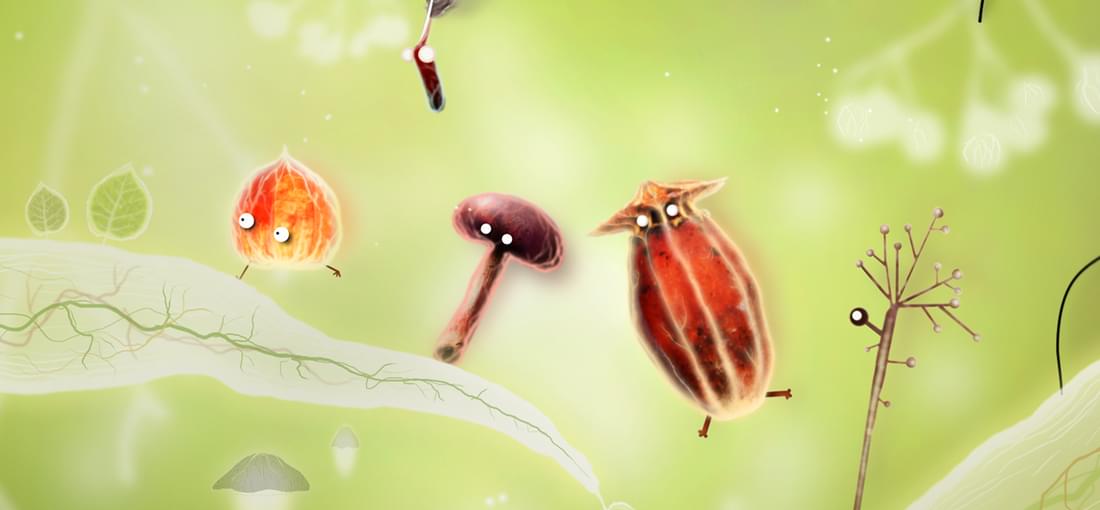
I played Amanita Design’s PC point-and-click adventure games out of order. I played the ‘Samorost’ games first. As much as I loved the developer’s signature whimsical characters and richly textured environments, I was starting to get tired of the trilogy’s cryptic puzzles, and the need for aimless clicking to elicit responses. But ‘Machinarium’ (AD's first full-length game) and ‘Chuchel’ (the fourth) broke me free of the tedium of the ‘Samorost’ formula. I loved both of these games in spite of their flaws. ‘Chuchel’, in particular, had the most cohesion in its collection of puzzles, perhaps due to their presentation through a series of vignettes. So I finally decided to check out ‘Botanicula’ (AD's full-length game). It is a beautiful-looking game without a doubt, again with cute characters and imaginative locales. After playing it, it was clear that AD had improved on their puzzle design and presentation over the years. Yet, even judging this game on its own merits, ‘Botanicula’ has weak, poorly designed puzzles. You exploring large, sometimes convoluted environments to look for objects and solve inventory puzzles in this game. I often didn’t get a good sense of where things were because this game is set in different parts of a plant and inside monsters? I disliked the mazes, and searching for up to 14 items in the sometimes oddly placed set pieces. You can also collect Creature Cards by interacting with your environments, but the payoff for which is hardly worth the effort. I got so frustrated with the unclear sidequests that I eventually finished this game using a walkthrough. I’m glad I did because solving some puzzles require my characters to act in ways that were not clearly introduced. Despite having 5 playable characters with its own unique skillset, ‘Botanicula’ hardly features puzzles that encourage thoughtful, cooperative use of them. Overall, it's a disappointing game, and it is a title from AD that can be skipped if you must.
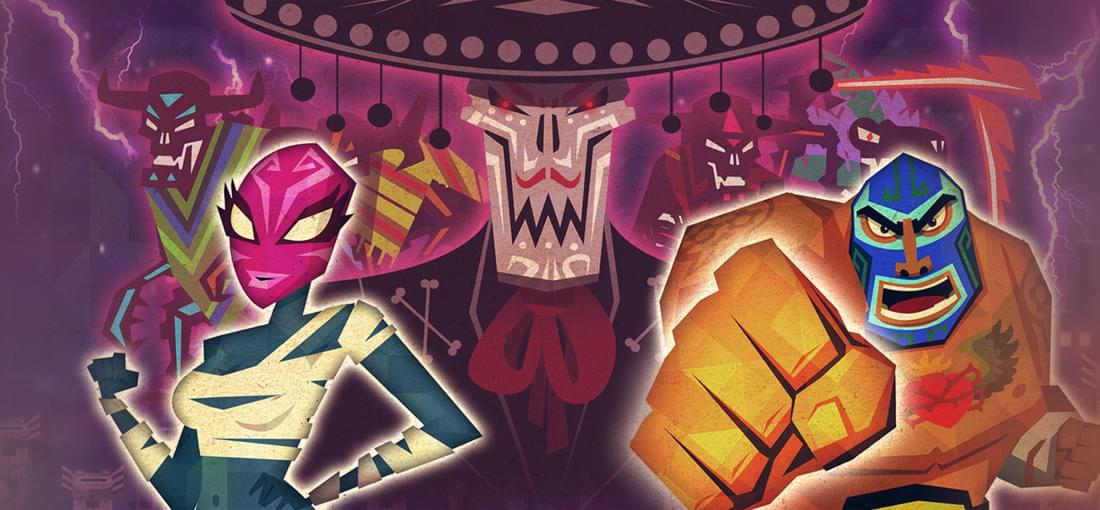
‘Guacamelee! Super Turbo Championship Edition’ is a Metroidvania game with a Mexican flavour. It’s the final iteration of the first ‘Guacamelee!’ game that includes added contents of previous DLCs, such as new areas, new boss and new abilities. I’ve never played the original ‘Guacamelee!’, but I really enjoyed what ‘GSTCE’ offered. If you are familiar with the gameplay of early ‘Metroid’ and ‘Castlevania’ games, as well as ‘Zelda II: The Adventure of Link’, then you’ll be right at home with ‘GSTCE’. It’s an action adventure game, in which you traverse maze-like environments, fight enemies, and collect abilities. You’ll then use the newly earned abilities to explore previously inaccessible areas. While ‘GSTCE’ does not hide its homage to and inspiration from these classic games, it does distinguish itself through its vibrant art design, frantic action, and Mexican themes. ‘GSTCE’ is challenging, and at times frustrating. Just when I thought I’d give up, I’d return after a brief break to eventually overcome those difficult platforming and boss fights. In the end, all your successes in the game feel well-earned. At default difficulty setting, I got more than 10 hours’ worth of game from just the main campaign. I didn’t even take on the El Infierno’s challenges, seek out the STCE exclusive final power-up, and collect all the Orbs. ‘GSTCE’ is a very enjoyable game with great replay value. It’s definitely worth checking out if you haven’t played ‘Guacamelee!’ yet.

I didn’t expect to enjoy ‘Party Hard’ as much as I did. Its premise of showing up at different parties and murdering the people there because they’re too loud is unnecessarily gruesome. Yet, when you play the game -- or at least watch it unfold – you’ll realize the game is actually rather ridiculous, and shouldn’t be taken seriously. ‘Party Hard’ is darkly comedic and almost self-aware, as if it is commenting on how we quickly become desensitize to violence and go on with our merry lives. The 8-bit-like graphics help to make the partygoers faceless, and the limitation of the technology makes them more like automatons than smart NPCs. Given that, ‘Party Hard’ never feels obscene or lurid. This simplicity also allows the gameplay to be at the forefront, which thankfully is pretty fun despite it starting to get repetitive by the sixth or seventh level. The joy and appeal of ‘Party Hard’ is to use your environment and traps to rid of the partygoers, preferably in large numbers. There are only about 6 or 7 levels that allow for just that. In the final levels, you’ll definitely need to exercise patience and be methodical to make those stealthy kills. When most partygoers’ movements seem unpredictable, and the traps and tools that are at your disposal are limited and randomized, your success in ‘Party Hard’ can really just come down to luck. ‘Party Hard’ may not be a sophisticated stealth game, but it's still fun and challenging. There is plenty of content to be explored and unlocked. Despite its limitations, I enjoyed it enough to call it one of my favourites, and recommend it for a brief bit of fun. P.S.: It also looks like the ‘High Crimes’ DLC is unlikely to come to the GOG version. So buyers beware!

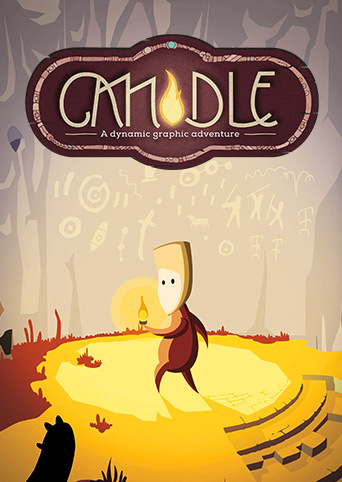
‘Candle’ is one of the most beautiful computer games released to date. With its vibrant, detailed water colour backdrops, it’s clear that the art team at Teku Studio spent much effort into creating the game’s imaginative world. Yet, the gameplay is a bit of a mess. As an adventure-platform game, it has fine inventory puzzles that are not too hard to solve. Its environment puzzles can be cryptic, as key clues or parts may be obscured by the detailed background. Plus, ‘Candle’ is not particularly good at telegraphing some traps and what you need to do to proceed. The worse are the minigames: I am getting so sick of playing sliding puzzles. At one point, I also needed to play nine men’s morris. I really don’t like needing to learn a board game in order to progress in the main game. Their inclusion screamed unimaginative design to me. Yet, the most frustrating part of ‘Candle’ is its platforming. Your character’s movement can be awkward, especially with jumping. By the end of the game, I still don’t have a good feel for how far he can jump or fall. I’ve died often because I missed jumps or misjudged timing of movements. A few times I fell because I thought I could land on certain parts of the detailed backdrop. This shouldn't happen when platforming is a key part of the game. The game starts off slow, but gradually builds momentum. It’s not bad for adventuring, but annoying for platforming. The game pretty much comes to a halt when you die repeatedly the platforming has no room for movement and timing errors. Overall, it didn’t help that cutscenes run a bit too long, and pictorial speech bubbles are followed by narration of the same conversation. I started off liking ‘Candle’, then came to really enjoy it, and finished off vexed by its minigames and punishing platforming. Still, if I managed to overcome the clunky platforming, so can you. It’s worth tolerating just so you can immerse yourself in the intricate artwork, which are truly a feast for the eyes.
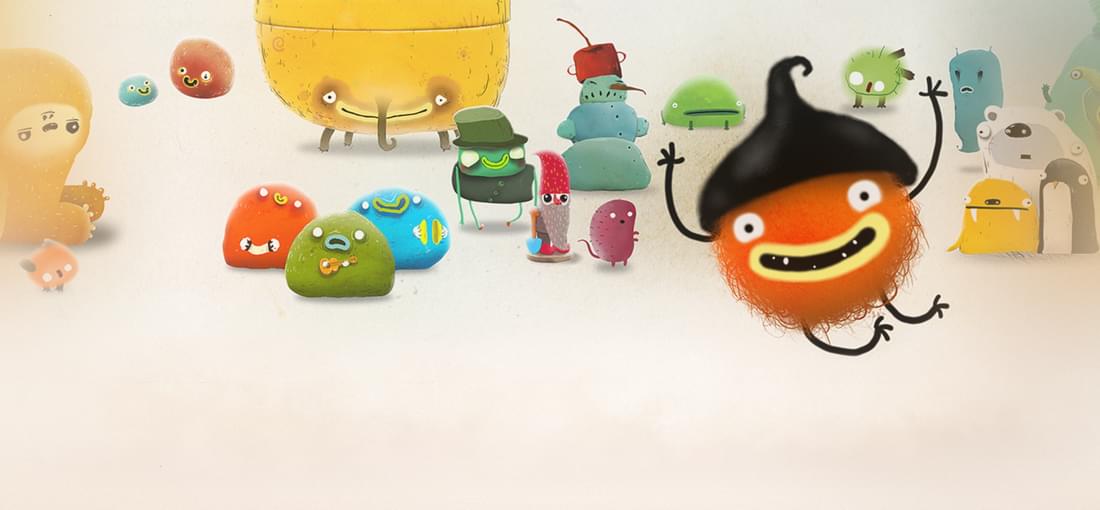
‘Chuchel’ is another whimsical production from Amanita Design. Unlike the developer’s previous efforts, ‘Chuchel’ is more of a series of interactive vignettes than a game. These vignettes are tied together by the common theme of the titular character trying to capture or retrieve an elusive cherry it wishes to eat. There are 30 chapters in total, with each chapter reminding me of the 5-minute episodes of ‘Pingu’ cartoon that I used to watch as a kid. The puzzles in each chapter are hardly difficult, as the game is more about interacting with your environment and other characters to set events in motion. The joy of ‘Chuchel’ is to watch the humourous consequences of your actions, not necessarily solving puzzles. With exception of two or three vignettes, it’s unlikely you’d really need to exercise to brain much to make your way through the game. I managed to get about 2 hours of game from ‘Chuchel’, so take that into consideration when you decide whether or not the game’s price point is reasonable. Playing ‘Chuchel’ is about enjoying its whimsy, visual humour, colourful art, unique character designs, and fun soundtrack. It’s fun casual fare that it’s best enjoyed in short bursts than in one sitting.
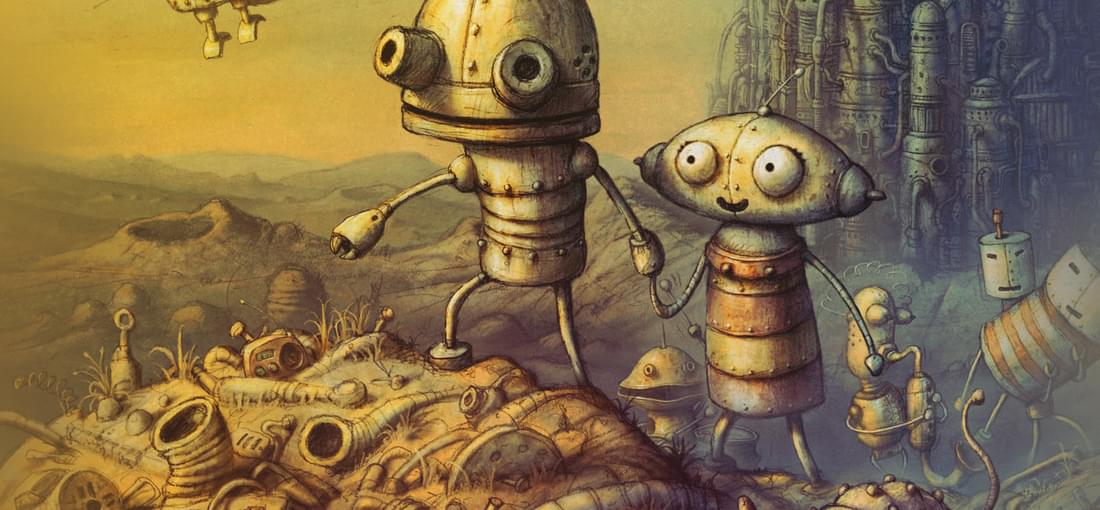
Amanita Design is synonymous with fantastic visual and audio design in games. Just look at their flagship series, ‘Samorost’. Even if you’re not a fan of their puzzles, you’ll very likely find their blend of whimsical characters, colourful palette, and atmospheric soundtrack appealing. ‘Machinarium’, Amanita Design’s first full-length game, has all the strengths and weaknesses that embodies the developer’s flagship titles. ‘Machinarium’ may be close to being 10 years old at the time of this review, but it still looks and sounds fantastic, and plays really well. Although the game is set in a world of metallic robots, the masterful use of dark lines and various shades of grey and brown never gets dull. In fact, the occasional splash of vibrant colours helps to bring characters, objects and locations of interest to your attention. The soundtrack is also very pleasing and immersive. While ‘Machinarium’ is visually and aurally appealing, I find its puzzles a bit of a mixed bag. The collection of puzzles is diverse, ranging from inventory puzzles to logic games. The developers even threw in arcade games for good measure. Puzzle lovers may appreciate the variety, but I find the lack of a cohesive theme annoying at times. With the disjointed presentation of puzzles, you’ll find yourself thinking carefully in a switch puzzle in one moment, and getting irritated by a Connect 5 game in the next. After that, you may start pulling your hair out by pace-killing bead sliding puzzles, before you breeze through inventory puzzles and wonder why you need to play 'Space Invader' to proceed. In spite of a few shortcomings, ‘Machinarium’ is a great adventure game that has withstood the test of time so far. Like many Amanita Design titles, I find it slightly overpriced for what you get. Depending on how well you’re at solving puzzles, ‘Machinarium’ can be a short gaming experience. This is worth keeping in mind before you buy this game, which I highly recommend for you to do.
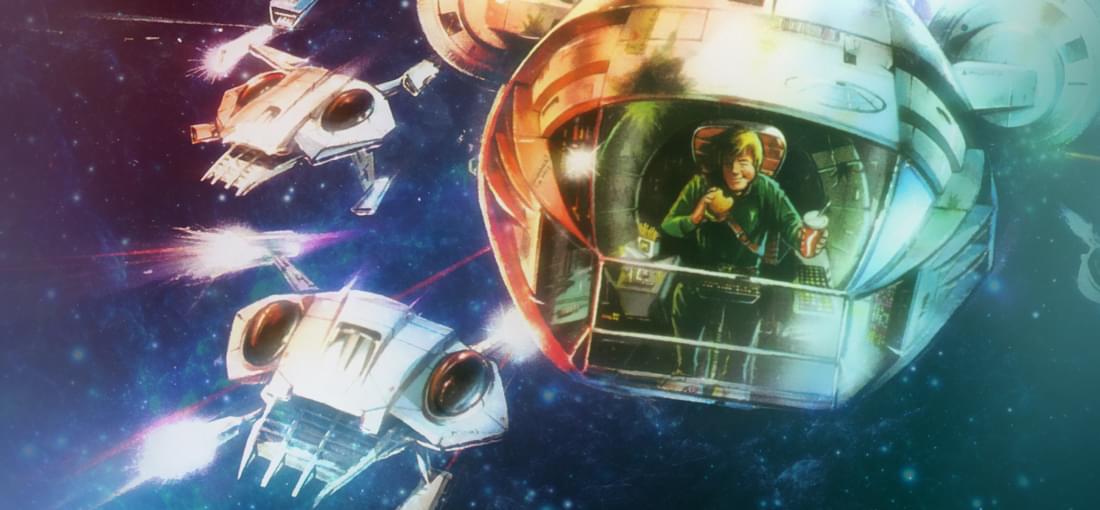
I never truly appreciated the greatness that is ‘Space Quest’ as a kid. It was not until I played ‘SQ3’ as an early teen that I started to get what ‘SQ’ is all about. I then began to get the strange humour, and understand it as a parody. My love for ‘SQ’ was as its peak with ‘SQ4’ and ‘SQ5’, and going back to play the first three ‘SQ’ games then helped me appreciate how far the game series had come. (It’s kind of like to truly appreciate modern superhero movies, you need to go back and watch the early ones like ‘Superman’, ‘Blade’ and ‘X-Men’.) Sure, the puzzle designs and stories in ‘SQ’ 1 to 3 can be flawed, but the games were and are still charming and fun -- with or without rose-tinted nostalgia googles.